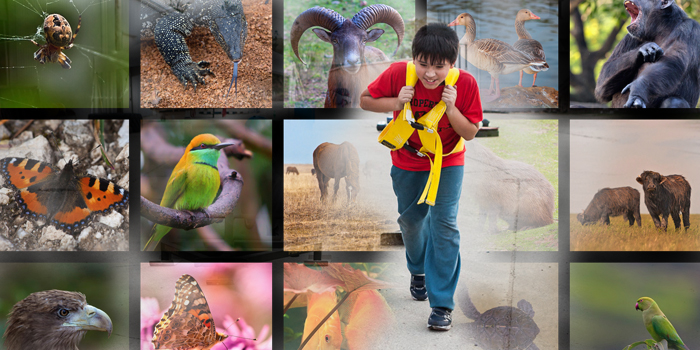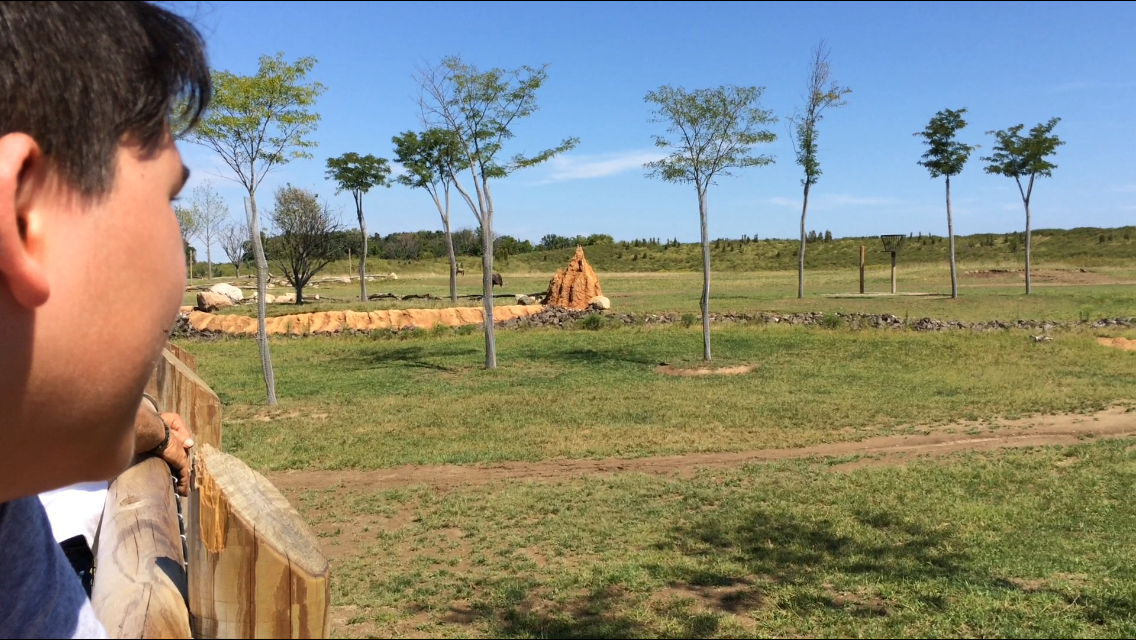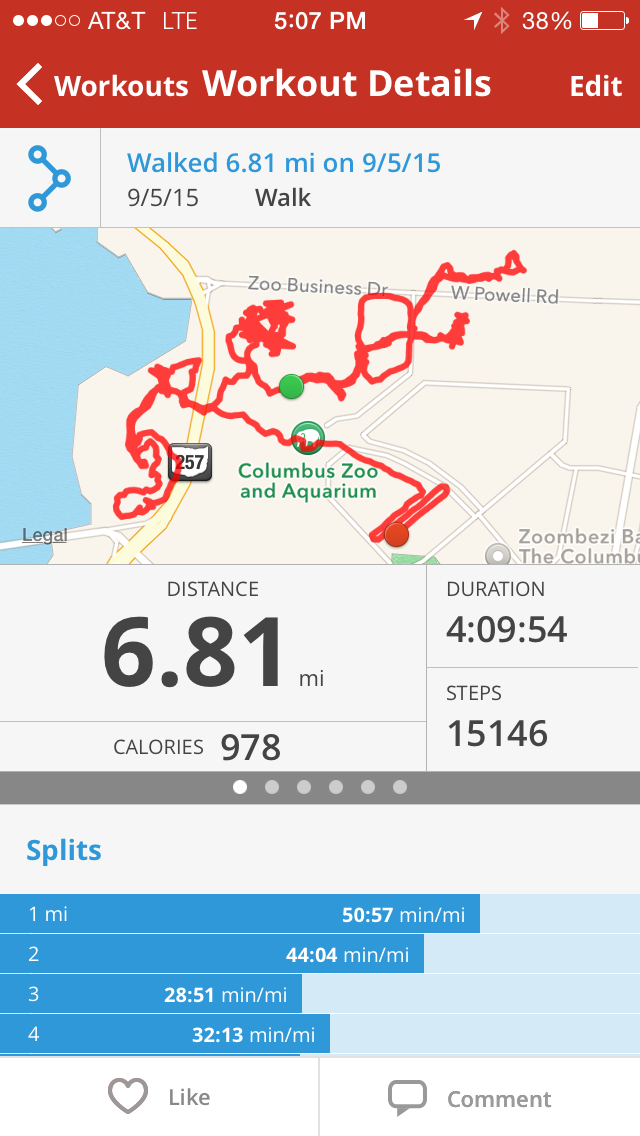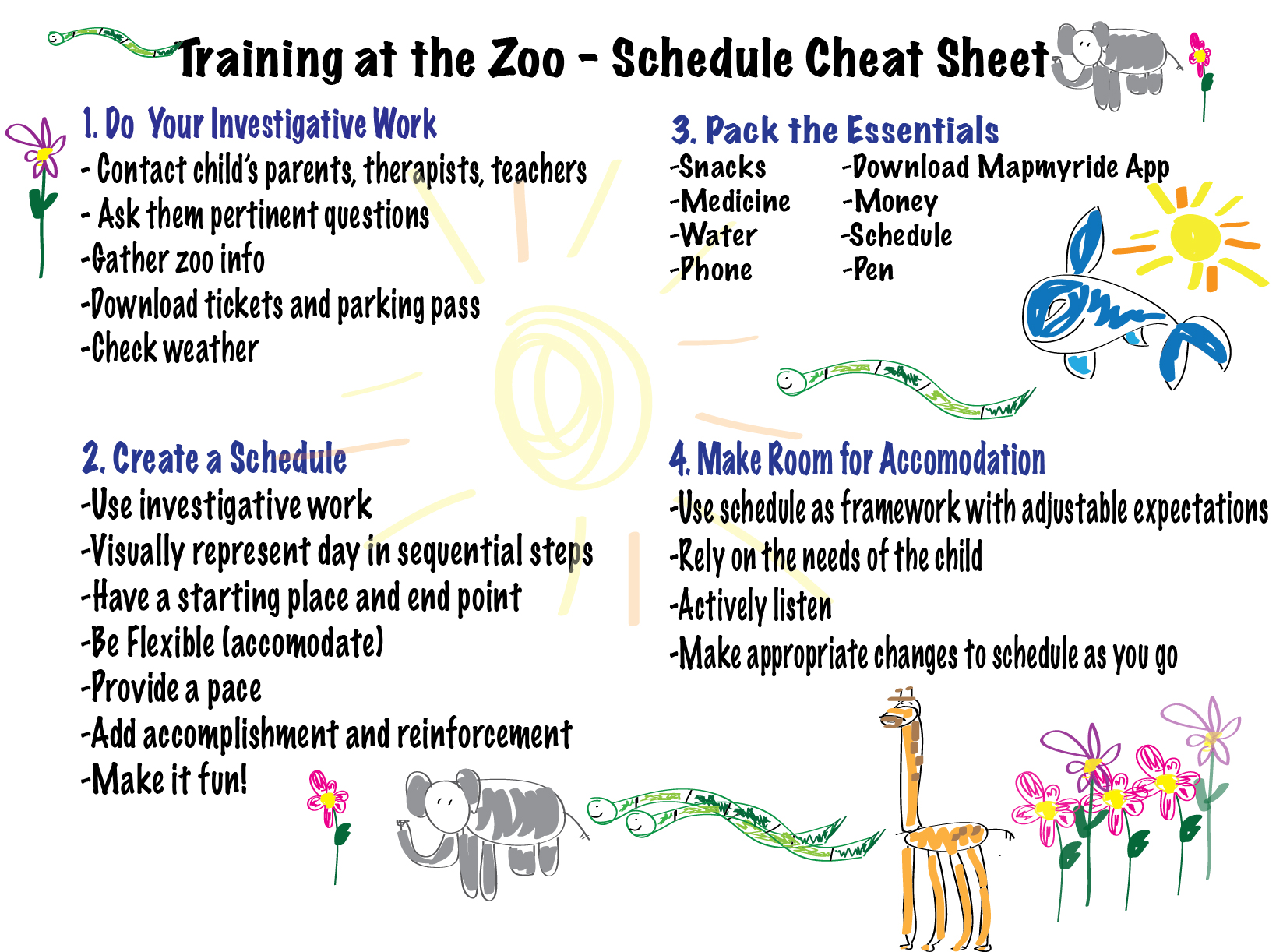
Try this: explain to a child with autism, one who is short-tempered and sensitive to extracurricular activity, that in the next 24 hours he will spend four and a half hours at the zoo, walk approximately seven miles in 90-degree weather, and be surrounded by hundreds of loud and sweaty people. Oh, and there’s hundreds of animals to see, too!
What is the likelihood, based on your spiel, that he will want to go the zoo? Despite changing the subject, enthusiastically sharing your high hopes of seeing the footprints of the Amur tiger to compare the roundness between the male and female, he will want NOTHING to do with the zoo—that horribly harsh image you painted within his mind. Nothing.
What if instead you approached the situation 100% differently? Instead of focusing on the harsh realities of the situation, you zeroed in on what was possible, measurable, task-oriented, and fun? Aren’t then the realities of the situation less intrusive and abrasive, and more appealing and welcoming?
Taking our training efforts to the Columbus zoo, I’d like to share how I approached the variables at play in order to have a meltdown-free day full of accomplishment, reinforcement, and amusement. We’ll cover how to: Do your investigative work, create a schedule, pack the essentials, and make room for accommodation.
My hope is that you’ll find one or many ideas worth trying to ensure that your next day out is enjoyable for every person (and animal) involved.
RECENT: Reintroducing the Jump Rope: The First 6 Weeks
Do Your Investigative Work
As a trainer or friend, begin the investigation by asking pertinent questions to the child’s parents, therapists, and/or schoolteachers. Aside from you, these are the consistent providers for the child that oftentimes spend more time with him than you. Ask questions that relate to trigger points, time frames, likes, dislikes, recommendations, etc. In my case, Traci (Blaine’s mom) was my go-to contact of choice. She had previously gone on school trips with Blaine to the zoo so she had helpful information that assisted my planning process. She gave insight into what animals and locations were of Blaine’s interest, which zoo snacks to consider, and an approximate time frame to work with.
Next, gather all the information about the zoo that you can. Through the Columbus Zoo’s website, I browsed through the upcoming attractions, show schedules, a list of animals, the park map, basic park protocols, and the hours of service.
Using my working knowledge of the child, Traci’s recommendations, the weather forecast, and the zoo’s profile as my foundation, I created the schedule.
Resting in the anthill and checking off our list
Create a Schedule
The idea behind the schedule is to create a visual representation of the day in an organized, sequential manner. It balances the unexpected with the expected and gives the planned event a pace, a starting place, and an end point. The main thing I love about presenting Blaine with a schedule is how it immediately shows we’re working together to create a memorable experience; it communicates there will be a fair share of perceived pleasure that is worth all the pain (all the stuff he’d rather not do or even consider doing). The schedule is flexible and gives room for change, too.
Calling upon my prior experience with Blaine, I knew the walking and 90-degree weather would be my two main areas of concern. Therefore, the entire schedule would help alleviate the impact of these two stressors. If minimized, the chances of us having a day full of accomplishment, reinforcement, and amusement would ensue.
Let’s take a look at the schedule I presented to Blaine the morning of our trip:
- Drive to Columbus Zoo (approximately 45 minutes). Hopefully Siri didn’t have any drinks last night.
- Hey, I bought tickets last night so NO waiting in line!
- Park and walk to zoo entrance.
- Rest/Start Mile Tracker – I wonder how many miles we’ll walk today!
- Let’s find the following animals today. Check off as we go! These animals can be found in any order:
- African Lion
- Amur Tiger
- Asian Elephant
- Please no snakes! I’ll have nightmares for life!
- Bonobo
- Polar Bear
- Rainbow Lorikeet
- Masai Giraffe
- Golden Mantled Bat
- Bonnethead Shark
- Western Lowland Gorilla
- Let’s rest as needed.
- Let’s get snacks and drinks as needed.
- After we find all of the animals, let’s drive home. This will be another 45-minute ride.
Notice nothing is mentioned about how far we’re going to walk, how hot it is projected to be, or how long we’re expected to stay. Instead the outline shows driving time, a list of animals we’ll walk to discover, a measuring tool to track our mileage, and plenty of rest time with snacks and liquids. You’ll notice we have a starting place, an agenda, two measureable ways to track our progress, and an ending point. He can also perceive where there may be some hardship (all the walking to see every animal on our list), but knows he’ll be given the things he requires to survive those uncomfortable situations—constant reinforcement via list and mile tracker, rest, and snacks. I added some humor too, which for us is important and goes a LONG way. I mentioned, “Please no snakes! I’ll have nightmares for life!”
For the next 20 minutes, all he talked about was snakes. No doubt, he was adamant about finding the snake pit because he wanted me to have nightmares for life. This conversation led to heightened excitement for both of us. “Hopefully Siri didn’t have any drinks last night,” was drawing upon a prior off-site adventure where we got lost. Naturally in that moment, I remember describing Siri as drunk because she took us to a dead-end road. On that day, Blaine began to laugh harder than I’ve ever seen, so it was worth revisiting that memorable day. As much as it brought tears of laughter, it also was a great reminder that we may get lost or it may take longer to get there for some unexpected reason, and that’s okay.
Pack the Essentials
As much as you’re preparing for the child, this is part of the plan where you consider yourself. What do you need to be the best facilitator of a great experience for the day? Personally this meant packing the following essentials in a knapsack, by which I’d have on my back the following day. Yes, you’re considering the child, but a good chunk of focus is making sure you have everything YOU need to productively function. Here’s what I packed: water, (2) protein bars, medication, my phone, money, our schedule, and a pen.
RELATED: Meltdown in the Compound
Make Room for Accommodation
As you know, planning is half the battle. The other half is execution. Although it would be fantastic to move through the pre-planned schedule without any obstacles to maneuver through, this is unrealistic. Therefore, make room for accommodation. Taking a look at the above schedule, I accommodate Blaine by having rest, food, and drinks drift throughout the entire day. This is setup specifically in this manner so I can actively listen to him by meeting his needs with flexibility. This way, I’m communicating that his requests are valuable and he will be heard. With this free-form design, you may cross off three animals on the list and then rest in an anthill so legs can rest. You may walk one mile between the gorilla and polar bear and need to order some drinks. You may consider after walking four miles for the day, it would be a great time to go on a train ride, followed by a sit-down meal. The point is, the schedule is setting up a framework with expectations, but getting from point A to point B relies on the needs of the child, therefore the schedule is subject to change.
Results
What could have been a day full of disaster and discomfort transpired as the opposite: on a blue-skied, 90-degree weather day, Blaine and I walked at least seven miles and crossed off every animal on the list—melt-down free. Three hours in I actually had to prompt Blaine one hour and 30 minutes in advance that we’d have to exit the zoo (I had a client scheduled for the early evening). A situation I did not foresee, we settled on a time after Blaine was trying to find every possible way to extend our stay.
S: Let’s begin to follow the exit signs at 3:30 pm.
B: How about 3:50 pm?
S: 3:35 pm.
B: 3:36 pm.
S: Deal!
If I didn’t have a prior engagement, there’s no doubt that we would have stayed until closing.
Blaine was highly motivated by the list and the mile tracker. He carried the schedule, pen and zoo map in his hand, and after discovering each animal on the list, we took turns crossing off each accomplishment. Every mile beyond the three-mile marker was another accomplishment and every update had him smile with pride and widen his eyes with astonishment. And yes, we rested throughout: in a hut, in the cockpit of a broken airplane, in an anthill, on the floor with the monkeys, next to the cool glass of the aquarium, on a bench next to the baby moose, below the fan spritzers across from the giraffes, in a restaurant, and on the train. Every rest refueled his energy stores and recharged his legs, so he said. There was minimal mention of the heat or people—my two original areas of concern.
Mapmyride app workout details
Although we had a fantastic day, here are a few things I plan on tweaking for next time to ensure we have another meltdown-free day full of challenge, reinforcement, and amusement:
Changes for Next Time
As for the next time we travel to the zoo, the schedule will consider the following new expectations for Blaine and myself:
- Surpass our seven-mile mark, and
- Discover new animals/attractions
These expectations are familiar to us and they’re allowing us to build upon our foundation. We may circle around to our favorite animals (animals seen last time) but we will include animals/attractions that were not on our list previously. Just as last time, the mile-tracker app will help us gauge and surpass our seven-mile mark. Even if we beat it by a 10th of mile, that’s progress and something to celebrate. Beyond our next visit, the tracker will be dispersed throughout. Therefore, not every visit will we focus on our walking distance.
- Record exact placement of car, and
- Limit engagements post zoo
Personally, these are a few things I’ll keep in mind when planning our next trip. I’ll first be sure to record the exact placement of the car. Granted I memorized the lane letter and number assignment posted on the light pole in space, I did not remember the exact car assignment. Next time I’ll park where it’s easily track-able, take a picture, and make sure Blaine captures it mentally as well. Searching for the car added an additional five minutes to the end of our day. Thankfully ,the zoo hires senior citizens to drive golf carts around the parking lot to search for people who appear to be lost.
Limiting engagements post zoo, I’d like to clear my schedule for the late afternoon and/or early evening to minimize the unnecessary pressures that are involved with time constraint.
Click Schedule Cheat Sheet pic to enlarge and then save for quick access














